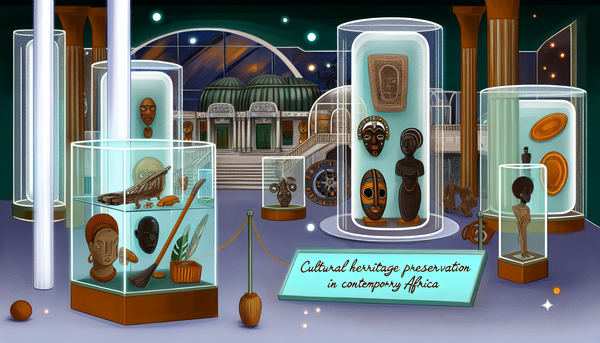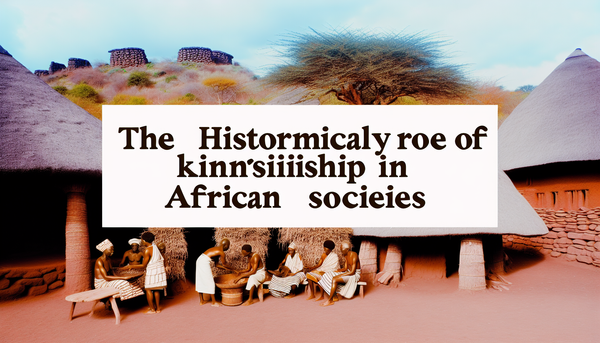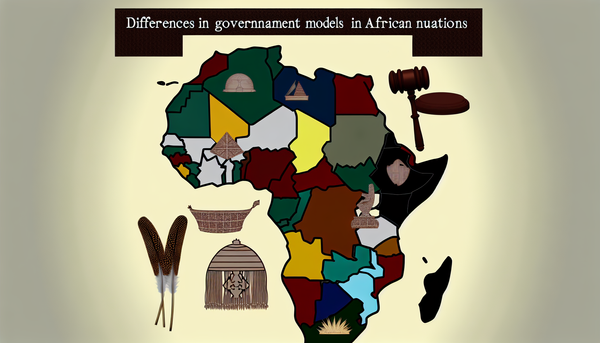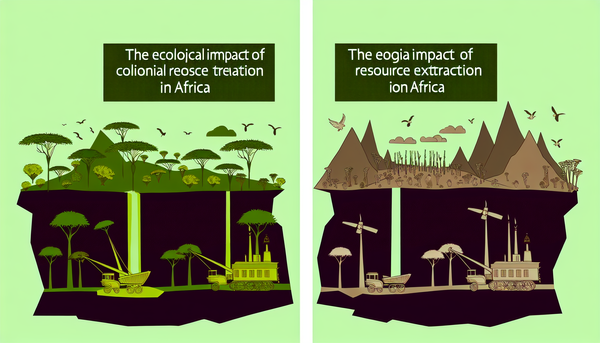The Development of Urban Centers in Pre-Colonial Africa
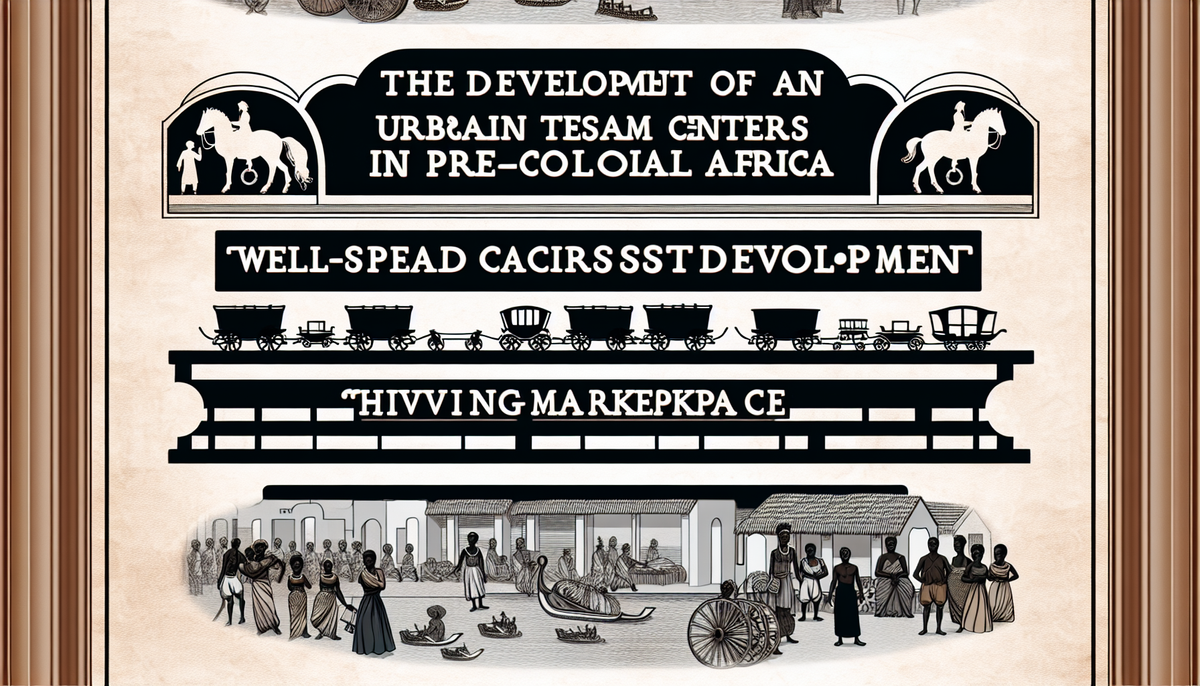
Origins and Foundational Cultures
The origins of urban centers in pre-colonial Africa can be traced back to various foundational cultures that flourished across the continent. These societies developed complex social structures, economic systems, and cultural practices, setting the stage for urbanization. The Nile Valley, for instance, was home to the ancient Egyptians, whose achievements in writing, architecture, and governance laid the groundwork for a sophisticated urban civilization.
In the West African region, the kingdoms of Mali and Ghana emerged as major trade hubs, facilitated by their strategic locations along trans-Saharan trade routes. The exchange of goods such as gold, salt, and ivory fostered economic prosperity, attracting diverse populations that contributed to the growth of urban areas. Similarly, the Swahili city-states along the East African coast thrived on commerce, linking African cultures with distant markets in the Middle East and Asia.
These early urban centers also served as melting pots of ideas, beliefs, and traditions. Artistic expressions, including sculpture, textiles, and music, flourished, reflecting the unique identities of different cultures. The importance of community and kinship bonds, alongside leadership structures rooted in local customs, played a significant role in shaping the dynamics of these burgeoning urban landscapes.
Trade Networks and Economic Expansion
Trade networks were pivotal in the economic expansion of urban centers in pre-colonial Africa. These intricate systems enabled the movement of goods, people, and ideas, stimulating the growth of cities and their surrounding regions. One of the most significant trade routes was the trans-Saharan pathway, which connected North Africa to the sub-Saharan interior. Cities like Timbuktu and Gao grew into bustling trade hubs, where merchants exchanged gold, salt, textiles, and other valuable commodities.
In East Africa, the Indian Ocean trade network was equally influential. Swahili city-states such as Kilwa and Mombasa leveraged their strategic coastal locations to engage in maritime trade with Arabian, Persian, and Indian merchants. This exchange fostered economic interdependence and cultural exchange, enriching local societies and enhancing urban development.
Local economies flourished as specialized crafts and industries emerged, from metalworking to pottery and weaving. Urban centers became focal points for innovation, resulting in the creation of markets that facilitated trade among diverse populations. The wealth generated from these exchanges not only supported the growth of cities but also enabled the establishment of political power, social stratification, and cultural sophistication, thereby solidifying the importance of trade networks in shaping pre-colonial African urbanization.
Architectural Styles and Innovation
The architectural styles of pre-colonial Africa reflect a rich tapestry of cultural influences and innovative techniques, showcasing the creativity and adaptability of various societies. Urban centers were often characterized by unique building materials, forms, and designs, influenced by local resources and climatic conditions. In the Sahel region, for example, the use of mud bricks facilitated the construction of impressive mosques and homes, such as the iconic Great Mosque of Djenné in Mali, which highlights the mastery of earthen architecture.
In East Africa, the Swahili coast saw the emergence of coral stone constructions, where intricate designs adorned houses and public buildings. These structures often featured large verandas and beautifully carved doors, demonstrating a blend of indigenous styles and foreign influences from Arab and Persian cultures due to extensive trade networks.
Furthermore, urban planning in many African societies exhibited a deep connection to community life and social organization. Streets, marketplaces, and religious centers were strategically designed to foster interaction among residents. Innovations in construction techniques, such as archways and domes, not only enhanced the aesthetic appeal of urban spaces but also improved their functionality. This architectural diversity and ingenuity underscored the significance of urban centers as cultural, economic, and spiritual hubs across pre-colonial Africa.
Social Structures and Leadership Systems
Pre-colonial African urban centers were characterized by intricate social structures that shaped community dynamics and governance. These societies often operated through hierarchical systems, where social classes were defined by wealth, lineage, and occupation. At the top of the hierarchy were elites, including kings, chiefs, and wealthy merchants, who wielded significant political and economic power. Their authority was often legitimized by religious beliefs or ancestral ties, reinforcing their status within the community.
Leadership systems varied widely among different cultures. In many regions, councils of elders played a crucial role in decision-making, offering wisdom and mediation to maintain societal harmony. In some societies, such as the Oyo Empire in West Africa, centralized monarchies emerged, where the king held extensive power and oversaw a bureaucratic structure to manage urban affairs.
Moreover, kinship ties were vital in shaping social interactions and obligations. Extended families often formed the backbone of communities, fostering solidarity and support networks. Gender roles also influenced societal roles, with women traditionally participating in trade and craft production, contributing to the economy while managing household responsibilities.
These social structures and leadership systems facilitated cooperation and cohesion within urban centers, enabling them to thrive as vibrant cultural and economic hubs in pre-colonial Africa.
Role of Religion and Spirituality
Religion and spirituality played a fundamental role in the formation and development of urban centers in pre-colonial Africa, influencing daily life, social structures, and community cohesion. Diverse belief systems, ranging from traditional African religions to the incorporation of Islam and Christianity, shaped the values and practices of urban societies. Sacred rituals, ceremonies, and festivals were key to fostering a sense of identity and belonging among residents.
In many communities, spiritual leaders, such as priests and shamans, held significant authority and were often consulted for guidance in matters of health, agriculture, and communal disputes. These leaders acted as intermediaries between the spiritual realm and the populace, reinforcing societal norms and ethical conduct. Sacred spaces, such as shrines and temples, served as focal points for worship and community gatherings, often becoming central to the urban landscape.
As urban centers expanded, the introduction of Islam, particularly along trade routes, brought about new religious and architectural influences, evident in the construction of mosques and Islamic schools. This not only enriched the cultural landscape but also promoted education and literacy. Thus, religion and spirituality were integral in shaping the social fabric and governance of pre-colonial African urban centers, guiding community interactions and fostering unity among diverse populations.
Technological Advancements and Tools
Technological advancements in pre-colonial Africa were crucial in fostering urban development and enhancing daily life. The innovation of tools and techniques in agriculture, metallurgy, and craftsmanship supported the sustenance of growing populations in urban centers. For example, the introduction of ironworking technologies enabled the production of more effective tools and weapons, which improved agricultural productivity and facilitated trade.
Agricultural techniques, such as crop rotation and the use of fertilizers, were integral to sustaining food supplies, particularly in the fertile regions like the Nile Valley and West African savannas. The cultivation of staple crops, including millet, sorghum, and rice, was complemented by advanced irrigation systems that maximized land usage.
Craftsmanship also flourished in urban centers, with artisans producing textiles, pottery, and intricate metalwork. Techniques such as lost-wax casting allowed for the creation of elaborate jewelry and tools, showcasing both utility and artistry. Additionally, the development of trade-related technologies, including navigational instruments for maritime trade, further stimulated economic growth.
These technological advancements not only enhanced the efficiency of various industries but also contributed to the cultural richness of urban societies. They played a vital role in linking communities, facilitating trade, and establishing a sense of identity and pride among diverse populations in pre-colonial Africa.
Interactions with Neighboring Regions
Pre-colonial African urban centers were not isolated; they actively engaged with neighboring regions, fostering a dynamic interplay of trade, culture, and politics. This interaction was facilitated by established trade routes that connected diverse societies, enabling the exchange of goods, ideas, and technologies. For instance, the trans-Saharan trade network linked West African empires, such as Mali and Songhai, with North Africa and the Mediterranean, allowing for the flow of gold, salt, and textiles.
In the East, Swahili city-states along the Indian Ocean coast engaged in trade with Arab, Persian, and Indian merchants. This interaction enriched local cultures, introducing new architectural styles, languages, and religious practices, such as Islam, which significantly influenced urban life.
Political alliances also emerged through these interactions, as neighboring regions sometimes united against common threats or engaged in diplomatic relations to enhance stability. The Bantu migrations, for example, spread agricultural practices and ironworking technologies across southern Africa, thereby shaping the societal structures of various communities.
These multifaceted interactions with neighboring regions not only fostered economic growth but also facilitated cultural exchange. This rich tapestry of relationships contributed to the complexity and vibrancy of urban centers in pre-colonial Africa, making them integral parts of a broader continental and global network.
